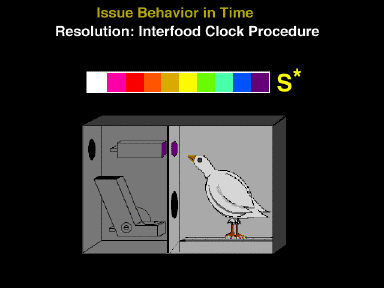 Slide 2-10
Slide 2-10

 Slide 2-10
Slide 2-10
This slide illustrates the basic procedure used to understand why behavior is organized in time the way it is. A temporal interval was partitioned with explicit stimuli. This procedure could be labeled an interfood clock procedure. The procedure was implemented with pigeons, key pecks, colored lights, and food.
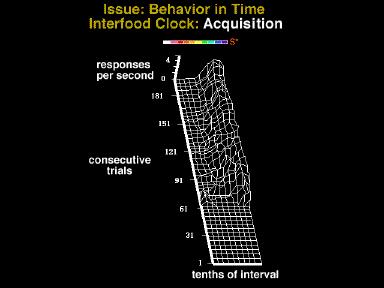 Slide 2-11
Slide 2-11
This figure documents the acquisition of responding to the interfood clock for one bird. The x axis represents tenths of the interval from one reinforcer to the next. The z axis represents increasing experience. Each consecutive trial is positioned behind the prior trial. The y axis represents the rate of responding.
The figure shows that after a period of no responding (about 60 trials), pecking began at the end of the interval, immediately preceding food presentation. With additional experience, this bird exhibited a stable increase in responding across the latter portions of the trial.
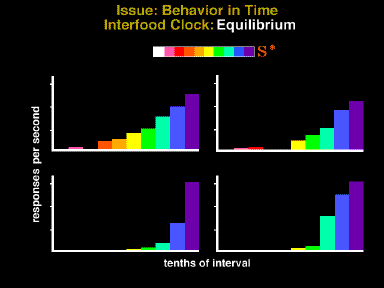 Slide 2-12
Slide 2-12
This figure illustrates the equilibrium measures after exposure to the interfood clock. Each frame represents the behavior of a different bird. The x axis represents the passage of time across the interreinforcement interval. Each bar represents the mean rate to that stimulus across the last five sessions (about 250 trials) of exposure to the procedure. It is, in effect, a slice from the preceding figure. As can be seen, response rates increased across the latter half of the interval.
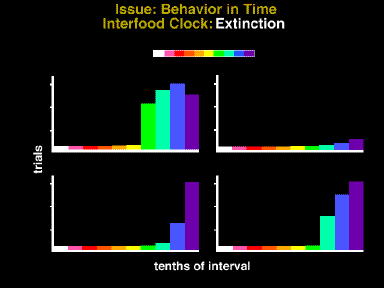 Slide 2-13
Slide 2-13
An extinction measure is an alternate way of measuring response strength. The ability of a stimulus to continue to control a response when food presentation no longer occurs, indicates the "behavioral inertia" to that stimulus. Stronger conditioning would be expected to produce greater resistance to extinction. This figure shows the number of trials of exposure before each of four birds stopped responding for at least 10 trials. Stimuli across the second half of the interval have an increasing ability to maintain responding in the face of extinction.
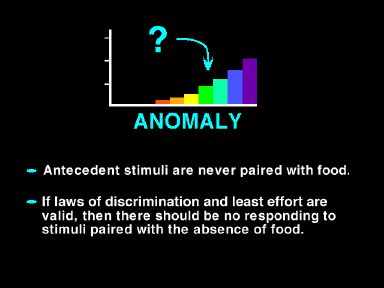 Slide 2-14
Slide 2-14
The responding to the antecedent stimuli in the second half of the interval presented a problem. Even when explicitly separated from the reinforcer, that portion of the interval controlled substantial responding The stimuli in that portion of the clock were never paired with food, therefore, if the laws of discrimination and least effort are valid, they should have controlled the absence of responding
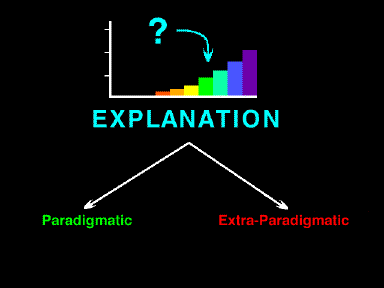 Slide 2-15
Slide 2-15
There are, of course, paradigmatic and extraparadigmatic solutions to this problem.
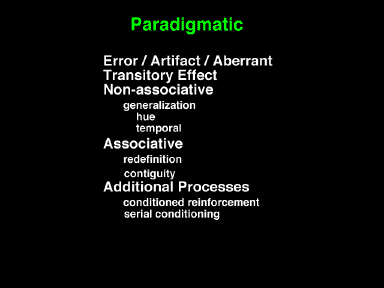 Slide 2-16
Slide 2-16
We will return to these paradigmatic solutions shortly. Each potential explanation will be examined in turn.
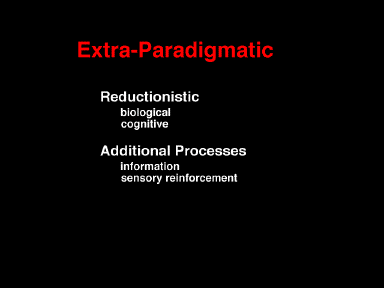 Slide 2-17
Slide 2-17
Extra paradigmatic solutions could take two forms: irrelevant ones, such as reductionistic solutions, and ad hoc solutions which simply assert the existence of a process with the properties needed to "solve" the problem.
Date Last Reviewed : May 26, 2003